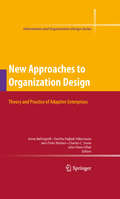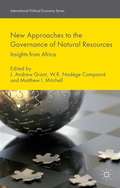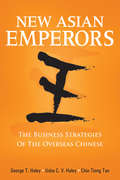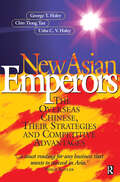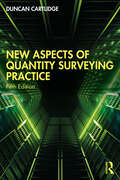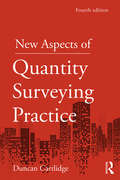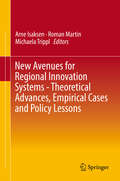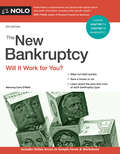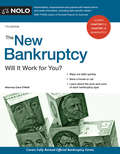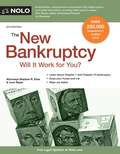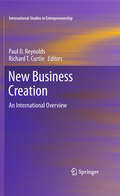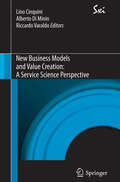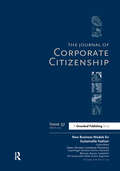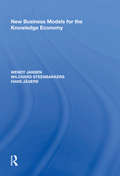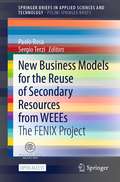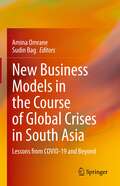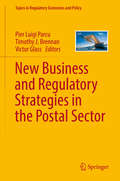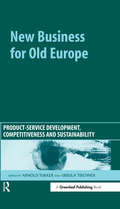- Table View
- List View
New Approaches to Old Problems: Expanding the Universe of Interpersonal Ties with Emerging Internet Applications
by Andrew McafeeWith the advent of Internet connectivity, the tendency to focus only on strongly tied colleagues within enterprises has given way to a broader and more useful perspective. The ability to form, maintain, and exploit more casual ties, and the ability to convert potential ties into actual ones are hugely valuable assets, both to individuals and to the enterprises in which they work. Indeed, many analysts have found that the greatest value of the Web's emergent social software platforms, including blogs, is their ability to connect people-and the information they have to offer-who would otherwise have remained isolated from one another. In this chapter Andrew McAfee dives deep into how interpersonal ties are created and organized on the Web and shows how levels of interaction-from very tight networks to no contact at all-can provide invaluable benefits. He presents four stories-VistaPrint, Serena Software, the U.S. intelligence community, and Google-that vividly illustrate how companies have exploited emergent social software platforms (ESSPs) to use ties between people to solve their most critical problems, from building a healthy corporate culture among far-flung offices to building prediction markets to revolutionizing the sharing of security intelligence. This chapter was originally published as Chapter 4 of "Enterprise 2.0: New Collaborative Tools for Your Organization's Toughest Challenges."
New Approaches to Organization Design
by Charles C. Snow Dorthe Døjbak Håkonsson Jørn Flohr Nielsen John UlhøiOrganization design is a key feature of management theory and practice. It addresses the challenges of constructing and maintaining effective organizations. Essential to organizational design is the assumption that it can improve organizations. Faced with the ever-accelerating pace of technological change and the restructuring of markets, many firms have been questioning their own organization. This book is the third to emerge from a series of workshops on organization design, featuring new empirical research and theoretical insights. The chapters are organized around four central themes: 1) Towards New Organizational Forms, 2) Dynamics of Adaptation and Change, 3) Theoretical and Practical issues, 4) Fit and Performance. Collectively, the chapters reflect the state of the art of OD as well as provide a further step towards the evolution of this important field of research.
New Approaches to the Governance of Natural Resources
by J. Andrew Grant W.R. Nad�ge Compaor� Matthew I. MitchellThe resurgent economic and geopolitical importance of Africa is evidenced by the growing investment by China, India, the United States, Brazil, and other countries in the continent's various natural resources sectors, such as oil, biofuels, forestry, fisheries, and minerals. This book provides an in-depth analysis of the governance of natural resources in Africa and new insights for readers as they navigate the burgeoning research on global governance initiatives and regional and national strategies. Moreover, by carefully examining both theoretical and policy-related debates (and drawing upon public opinion data in countries such as Angola and South Sudan), the book makes important connections between theory and practice surrounding natural resource sectors. Consequently, it offers scholars, graduate students, policy-makers, think tank researchers, and media with a comprehensive and authoritative examination of the current research being conducted on the governance of natural resources in Africa.
New Argentine and Brazilian Cinema
by Jens Andermann Álvaro Fernández BravoReality Effects brings together the reflections of leading film scholars and critics from Latin America, the UK and the United States on the re-emergence of the real as a prime concern in contemporary Argentine and Brazilian film, and as a main reason for the acclaim both cinematographies have won among international audiences in recent years.
New Asian Emperors
by Usha C. Haley George T. Haley Chinhwee TanSoutheast Asia has a population of more than half a billion, yet its economy is dominated by about 40 families, most of Overseas Chinese descent. Their conglomerates span sectors as diverse as real estate, telecommunications, hotels, industrial goods, computers and sugar plantations. New Asian Emperors shows how and why Overseas Chinese companies continue to dominate the region and have extended their reach in East Asia, despite the Asian financial and SARS crises of the past decade. The authors base their conclusions on in-depth structured interviews spanning a decade with the often elusive Overseas Chinese CEOs including Li Ka-shing, Stan Shih, Victor Fung, Stephen Riady and Sukanto Tanoto, as well as on the strategic information that their companies use.The analysis of the New Asian Emperors' present-day management techniques and practices draws on the history, culture and philosophical perspectives of the Overseas Chinese in Southeast Asia. In the midst of today's global economic crisis, this book also takes a fresh look at the role and management practices of the Overseas Chinese as they continue to create some of Asia's wealthiest and most successful companies.New Asian Emperors explains:The sources and characteristics of Overseas Chinese managementWhether Overseas Chinese management practices will spread in the same way that Japanese management did in the 1970sWhether Western management technologies have found themselves outmaneuvered in Asia's post-crisis arenaThe Overseas Chinese managers' strategies for the informational black hole of Southeast Asia and what Western managers can learn from themThe New Asian Emperors' unique strategic perspectives and management styles revealed through exclusive, in-depth interviewsThe implications for successfully co-operating and competing with the Overseas Chinese of Southeast AsiaNew Asian Emperors offers key insights into the Overseas Chinese and the important role that cultural roots play in their dominance of Southeast Asian business.
New Asian Emperors: The Business Strategies Of The Overseas Chinese
by George Haley Chin Tiong Tan Usha C HaleyMuch has been written about the rise of the Asian economies in recent decades, and their coming economic dominance in the next century. The New Asian Emperors shows how and why overseas Chinese companies are achieving dominance in the Asia Pacific. In the wake of the Asian Currency crisis, this book takes a fresh look at the role of the overseas Chinese as they continue to create some of Asia's most wealthy and successful companies. In particular, the authors tackle the principal difference between Western and Eastern business practices. The overseas Chinese, due to their origins and history developed a unique form of management - now they maintain it as their competitive advantage. Although Asian governments are currently floundering, the overseas Chinese networks continue to prosper. The authors explain the following to Eastern and Western managers:the sources and characteristics of overseas Chinese management,how to combat the overseas Chinese,the strengths and exploitable weaknesses of the overseas Chinese,whether overseas Chinese management practices will spread in the same way as Japanese management did,whether Western management technologies will find themselves outclassed.A feature of the book are the exclusive, in-depth interviews with the New AsianEmperors since most of them avoid the press and little is known of them.
New Aspects of Quantity Surveying Practice
by Duncan CartlidgeThe construction industry is undergoing great change particularly with the introduction of digital technologies and the increasing emphasis on sustainability and ethical practice. The fifth edition of New Aspects of Quantity Surveying Practice introduces and discusses these changes and their impact on the industry. The book champions the adaptability and flexibility of the quantity surveyor, whilst covering the hot topics which have emerged since the previous edition’s publication, including: • A new chapter on the impact of digital construction • Sustainable construction • Procurement trends • Ethics and ethical practice • The RICS Futures (2020) publication The book is essential reading for all quantity surveying students, teachers and professionals. It is particularly suited to undergraduate professional skills courses and non-cognate postgraduate students looking for an up to date understanding of the industry and the role.
New Aspects of Quantity Surveying Practice: A Text For All Construction Professionals
by Duncan CartlidgeIn this fourth edition of New Aspects of Quantity Surveying Practice, renowned quantity surveying author Duncan Cartlidge reviews the history of the quantity surveyor, examines and reflects on the state of current practice with a concentration on new and innovative practice, and attempts to predict the future direction of quantity surveying practice in the UK and worldwide. The book champions the adaptability and flexibility of the quantity surveyor, whilst covering the hot topics which have emerged since the previous edition’s publication, including: the RICS ‘Futures’ publication; Building Information Modelling (BIM); mergers and acquisitions; a more informed and critical evaluation of the NRM; greater discussion of ethics to reflect on the renewed industry interest; and a new chapter on Dispute Resolution. As these issues create waves throughout the industry whilst it continues its global growth in emerging markets, such reflections on QS practice are now more important than ever. The book is essential reading for all Quantity Surveying students, teachers and professionals. It is particularly suited to undergraduate professional skills courses and non-cognate postgraduate students looking for an up to date understanding of the industry and the role.
New Avenues for Regional Innovation Systems - Theoretical Advances, Empirical Cases and Policy Lessons
by Arne Isaksen Roman Martin Michaela TripplThis book discusses the latest theoretical advances in regional innovation research, presents empirical cases involving the development of regional innovation systems (RISs), and explores regional innovation policy approaches. Grounded in the extensive literature on RISs, it addresses state-of-the-art developments in light of recent theoretical advances in economic geography and related disciplines. Written in honor of Bjørn Asheim's seventieth birthday, the book includes novel and carefully selected chapters prepared by collaborators, colleagues and former PhD-students of one of the founding fathers of RIS research. Further, it makes a significant contribution to the academic debate on regional innovation and growth and offers valuable insights for scholars and policymakers alike.
New Balance Athletic Shoe, Inc.
by Robert S. Huckman Carin-Isabel Knoop H. Kent BowenConsiders whether New Balance, one of the world's five largest manufacturers of athletic footwear, should respond to Adidas' planned acquisition of Reebok--a transaction that would join the second- and third-largest companies in the industry. Highlights the unique aspects of New Balance's strategy--focusing on fit and performance by offering long-lived shoes in a wide variety of widths and eschewing celebrity endorsement of its products--and discusses New Balance's operations decisions to support that strategy. These include significant use of domestic manufacturing at a time when nearly all other competitors sourced finished shoes from Asian suppliers and an emphasis on improving inventory management for its network of small and large retailers. Set just after the announcement of the Adidas-Reebok transaction in 2005, with New Balance having recently initiated a companywide effort to improve operational performance through the application of concepts from lean manufacturing and the Toyota Production System. Asks students to consider whether New Balance should change aspects of its operations strategy in light of the consolidation among its competitors or whether the Adidas-Reebok transaction represents an opportunity for New Balance to emphasize the importance of moving forward with its current approach.
New Balance Athletic Shoe, Inc. (Abridged)
by Robert S. Huckman Carin-Isabel Knoop H. Kent Bowen Matthew PrebleConsiders whether New Balance, one of the world's five largest manufacturers of athletic footwear, should respond to Adidas' planned acquisition of Reebok-a transaction that would join the second- and third-largest companies in the industry. Highlights the unique aspects of New Balance's strategy-focusing on fit and performance by offering long-lived shoes in a wide variety of widths and eschewing celebrity endorsement of its products-and discusses New Balance's operations decisions to support that strategy. These include significant use of domestic manufacturing at a time when nearly all other competitors sourced finished shoes from Asian suppliers and an emphasis on improving inventory management for its network of small and large retailers. Set just after the announcement of the Adidas-Reebok transaction in 2005, with New Balance having recently initiated a companywide effort to improve operational performance through the application of concepts from lean manufacturing and the Toyota Production System. Asks students to consider whether New Balance should change aspects of its operations strategy in light of the consolidation among its competitors or whether the Adidas-Reebok transaction represents an opportunity for New Balance to emphasize the importance of moving forward with its current approach.
New Balance Athletic Shoes
by Kim B. ClarkFaced with growth exceeding 100% per year, James Davis, president of New Balance, must decide how to meet the need for additional capacity. Several factors contribute to a climate of extreme uncertainty. Several options are considered, ranging from a second shift to acquiring a plant in Ireland. Sufficient information is provided to allow an analysis of forecasted demand as well as the strategic financial and organizational implications of alternative courses of action.
New Balance: Managing Orders and Working Conditions
by Matthew Preble Michael W. Toffel Eileen McNeelyNew Balance Athletics, Inc., a major U.S.-based athletic footwear and apparel brand, sources most of its footwear products from independent suppliers whose factories are located in China, Indonesia, and Vietnam. Monica Gorman, vice president of responsible leadership and global compliance, is seeking to combine data sets collected by different parts of the organization to see whether she and her colleagues in the company's order management function can make a clear connection between the corporate social responsibility (CSR) results that her function tracks at the supplier level, with New Balance's order placement practices.
New Bankruptcy, The: Will It Work for You?
by Cara O'NeillNot sure where to start? Let’s find the right bankruptcy option for you. You know bankruptcy will help you get back on your financial feet. But which chapter type is best? The New Bankruptcy explains the benefits of Chapter 7 and Chapter 13 bankruptcy. You’ll learn that Chapter 7 bankruptcy will: Not sure where to start? Let’s find the right bankruptcy option for you. wipe out credit card balances, utility bills, and more protect property you need to work and live, and take about four to six months to complete. Chapter 13 bankruptcy works by keeping creditors at bay while you: catch up on a house or car payment pay off an overdue tax or support balance, and pay less on other debt, such as credit cards and student loans. The 8th edition’s expanded online companion page includes downloadable worksheets and easy-to-use charts, as well as a sample bankruptcy filing on the latest official legal forms.
New Bankruptcy, The: Will It Work for You?
by Stephen Elias Leon BayerChoose the best bankruptcy option The New Bankruptcy provides clear-cut information, answers to common questions, worksheets, and strategies to help you figure out whether bankruptcy is the right solution to your debt problem. Find out: the main differences between Chapter 7 and Chapter 13 bankruptcy whether you qualify for Chapter 7 bankruptcy (the means test) how the Chapter 13 repayment plan works which type of bankruptcy (7 or 13) is better in various situations which debts are wiped out what happens to your property, including your home, car, and retirement accounts, and other ways to handle debt problems. The book also outlines the bankruptcy process and includes completed sample bankruptcy forms.
New Bankruptcy,The
by Stephen Elias Leon BayerConsidering bankruptcy? Get the facts and find out how bankruptcy could work for you. Bankruptcy laws have changed, and figuring out how to use them effectively is harder than ever. For plain-English guidance you can trust, turn to The New Bankruptcy. Get the strategies, clear-cut answers, and information and you need to figure out whether bankruptcy is the right solution for your debt problems. Find out: -if you qualify for Chapter 7 bankruptcy -how Chapter 13 repayment plans work -which debts are wiped out -how bankruptcy affects homeowners -if you can keep cars and other property -how bankruptcy affects credit -alternative ways to handle debt problems This edition includes updated state and federal exemption tables, plus information on recent Supreme Court cases used to interpret 2005 bankruptcy changes. You'll also get worksheets to help you determine whether you can file for bankruptcy, including fully up-to-date exemption charts, helpful checklists, and easy-to-use legal charts for all 50 states.
New Business Creation
by Richard T. Curtin Paul D ReynoldsUnderstanding the origins of new businesses -- the firm creation process--has been dramatically affected by the development of longitudinal studies of business start-ups. Several projects have been implemented to track the development of new firms, from the emergence of a business idea and organization of a start-up team through the birth of an operational business. The U.S. projects (the first and second Panel Studies of Entrepreneurial Dynamics, known as PSED I and II) have counterparts in a number of other countries: Australia, Canada, China, Latvia, Netherlands (two projects), Norway, and Sweden. These eleven projects in nine countries, implemented over the past decade, are at different stages of development and have been utilized for a wide range of assessments of entrepreneurial and business creation phenomena. This volume presents the state of the art of these international research projects, providing the first in-depth comparison of the firm creation data across a wide range of national contexts. The work will be of great interest to the research community, particularly those developing such projects in their own countries, as well as policy makers and scholars interested in the effect of national context on the business creation process.
New Business Models and Value Creation: A Service Science Perspective
by Alberto Di Minin Riccardo Varaldo Lino CinquiniThe contemporary economic landscape features the prevalence of the service sector in economic systems, the pervasive servitisation of manufacturing, innovations in traditional business models and new value creation models, thanks to the new possibilities offered by the web, ICT and other enabling technologies. In this evolving context, this book provides qualified contributions on the topic of service science from a managerial perspective. A multidisciplinary perspective is adopted, dealing with both the structural-technological and dynamic-relational aspects of managing complexity. In addressing the contribution that service science can make to business value creation, this book covers relevant issues such as product servitisation, business modelling, value cocreation with customers, performance measures and the role of ICT. It also presents some innovative experiences of management models in service organisations operating in the environmental, energy and health-care sectors. This book aims to enhance the value of the results of research intertwined with the development of a new training curriculum started four years ago at the Scuola Superiore Sant'Anna of Pisa (Italy) with the evolution of the "Master in Management of Innovation" into the new "Master in Management, Innovation and Service Engineering" (MAINS).
New Business Models for Sustainable Fashion: A Special Theme Issue of The Journal of Corporate Citizenship (Issue 57)
by Miguel Angel Gardetti Esben Rahbek Gjerdrum PedersenThe fashion industry has not traditionally been associated with definitions of sustainable development and sustainability. The social and environmental challenges faced by the fashion industry concern the entire supply and demand chain, propped up by a throwaway consumer culture.In response to these sustainability challenges, some fashion companies have developed innovative social and environmental initiatives. While many of these initiatives are sympathetic, resourceful and hold real potential for generating social and environmental improvements, greater scale and scope is needed in order to bring about a more fundamental shift in current practices.This Special Issue of the Journal of Corporate Citizenship explores how sustainability can be a driver for exploring new business models within a single industrial setting, highlighting some of the sustainability initiatives that bring hope for a more sustainable future. New Business Models for Sustainable Fashion is a must-read for researchers and practitioners tackling the challenges of an industry in need of large-scale transformation.
New Business Models for the Knowledge Economy
by Wendy Jansen Wilchard Steenbakkers Hans JagersFew concepts in business today are as widely discussed as business models. Research shows that business models are a better predictor of financial performance than traditional industry classifications. The unprecedented potential of the internet (interactivity, connectivity and speed of communication) along with the new generation of IT applications for enabling co-operative working and communication gives rise to new business models for organization creation and development. It is becoming clear that organizations that manage to incorporate values such as sense of community, knowledge sharing and enlightened self-interest into their business model, will perform better in the network economy than organizations whose business models are based solely on economic rationalism. This book features a business model that presents three new types of business model, in which 'customization', 'innovation', and 'authenticity' play an important role as solutions to the new requirements of business. The authors provide an explanation of their new models and explain how they can be used by both profit and not-for-profit organizations to design an integrated strategy for organizational development, governance, IT and business processes. The result is a rigorous but very accessible guide for anyone interested in organizational development and new business strategy.
New Business Models for the Reuse of Secondary Resources from WEEEs: The FENIX Project (SpringerBriefs in Applied Sciences and Technology)
by Paolo Rosa Sergio TerziThis open access book summarizes research being pursued within the FENIX project, funded by the EU community under the H2020 programme, the goal of which is to design a new product service paradigm able to promote innovative business models, to open added value to the vessels and to create new market segments. It experiments and validates its approach on three new concepts of added-value specialized vessels able to run requested services for several maritime sectors in the most effective, efficient, economic valuable and eco-friendly way. The three vessels share the same lean design methodology, IoT tools and HPC simulation strategy: a lean fact-based design model approach, which combines real operative data at sea with lean methodology, to support the development and implementation of the vessel concepts; IT customized tools to enable the acquisition, processing and usage of on board and local weather data, through an IoT platform, to provide business services to different stakeholders; HPC simulation, providing a virtual towing tank environment, for early vessel design improvement and testing. The book demonstrates that an integrated LCC analysis and LCC strategy to guarantee sustainability to vessels concepts and the proper environmental attention inside the maritime industry.
New Business Models in the Course of Global Crises in South Asia: Lessons from COVID-19 and Beyond
by Amina Omrane Sudin BagTo survive and sustain businesses during such times of crisis becomes difficult for managers and entrepreneurs. This in turn amplifies the importance of designing new flexible and adaptive business models. This book addresses different business situations that occur during national and global crises, such as the COVID-19 pandemic. Specifically, it proposes new and inspiring business models for various industries such as service and retail industry using different statistical software like SPSS and AMOS. It discusses the various changing elements of businesses such as the application of artificial intelligence (AI) and machine learning and how to cope with these unexpected business elements to maintain sustainable development.
New Business and Regulatory Strategies in the Postal Sector (Topics in Regulatory Economics and Policy)
by Timothy J. Brennan Pier Luigi Parcu Victor GlassThis book addresses major issues facing postal and delivery services throughout the world. Worldwide, there is currently a considerable amount of interest in postal and delivery economics. The industry is reacting to a state of near crisis and is implementing different drastic changes. The European Commission and member States are still wrestling with the problem of how to implement entry liberalization into postal markets, how to address digital competition, and how to maintain the universal service obligation (USO). The Postal Accountability and Enhancement Act of 2006 in the U.S. has perhaps created and exacerbated the problems faced by USPS. Digitalisation, technological development and online platforms are strongly affecting both the way postal and delivery operators are managing their services as well as their role on the market. Strong emphasis was attributed to the assets of Postal Operators (POs) and their added value in the digital age as well as on new business strategies. This volume presents original essays by prominent researchers in the field, selected and edited from papers presented at this year’s 26th Conference on Postal and Delivery Economics held in Split, Croatia, from May 30- June 2, 2018.Topics addressed by this volume include quality of service, last mile solutions, and competition in the liberalized market. This book will be a useful tool not only for graduate students and professors, but also for postal administrations, consulting firms, and federal government departments.
New Business for Old Europe: Product-Service Development, Competitiveness and Sustainability
by Ursula Tischner Arnold TukkerSelling products used to be the standard way of doing business. Traditionally, it is left to the user to transform the purchase of a product into something that fulfils effectively a final-user need. Today, two streams of research – business management and sustainability – normally with very distinct perspectives on the world, have surprisingly converged to form a common conclusion: selling products is old-fashioned business. Companies should switch their focus to selling need fulfilment, satisfaction, or experiences. Or, in other words, selling integrated solutions or product-services. The business management literature argues that, by focusing on the integrated, final-client needs, and delivering integrated solutions fulfilling these needs, companies will be able to improve their position in the value chain, enhance added value of their offering, and improve their innovation potential. In a business world where many products are becoming equally well-performing commodities, this strategy is one of the ways to avoid a sheer competition on price – a type of competition that Europe never can win with emerging and low-cost economies such as China. In that sense, product-services can mean new business for old Europe. The sustainability knowledge stream argues that need-focused solutions could be inherently more sustainable than products. Product-services could offer the value of use instead of the product itself and decrease the environmental load in two ways. First, companies offering the service would have all the incentives to make the (product-)system efficient, as they get paid by the result. Second, consumers would be encouraged to alter their behaviour as they gain insight into all the costs involved with the use. Until today, the connections and interchange between the two research streams have been quite limited. The question of whether product-services truly are the avenue to a sustainable world is still under discussion. This book aims to develop a systematic view on this issue. The potential of product-services to enhance competitiveness and contribute to sustainable development prompted the EU to invest heavily in the theme under the EU's 5th Framework Programme (FP5; 1997-2002). A variety of research and development projects in the field were supported under the umbrella of the Sustainable Product Development Network (SusProNet). These included MEPSS (Methodology Product Service Systems); Home Services; HiCS (Highly Customerised Solutions); Prosecco (Product-Service Co-design); and Innopse (Innovation Studio and exemplary developments for Product-Service). The projects were undertaken by a mix of European research institutions and companies including Orange, Philips and Nokia. Some of these projects focused on developing methods that could help industries change their output from a product to a service. Others focused on the development of new product-services or solutions (HiCS, Prosecco, Innopse), and yet others tried to analyze under which circumstances product-services are likely to be implemented and accepted by consumers (Home Services). One project focused on dissemination of the concept to SMEs (Lean Services). Other projects focused purely on new product-service development, such as Brainfridge (an intelligent fridge managing its supply chain), ASP-NET (application service providers), Protex (intelligent enzymes) and IPSCON (receivers for wireless telephones). New Business for Old Europe brings together the key outputs from all of these groups to present a state-of-the-art collection on product-service development, prospects and implications for competitiveness and sustainability. The book has a number of aims. First, it attempts to bridge the gap between business and sustainability literature to lead to a better-founded understanding of the business drivers for embarking on product-service development, and its relation with sustainability and competitiveness. Second, the book reviews the large amount of studies that h

